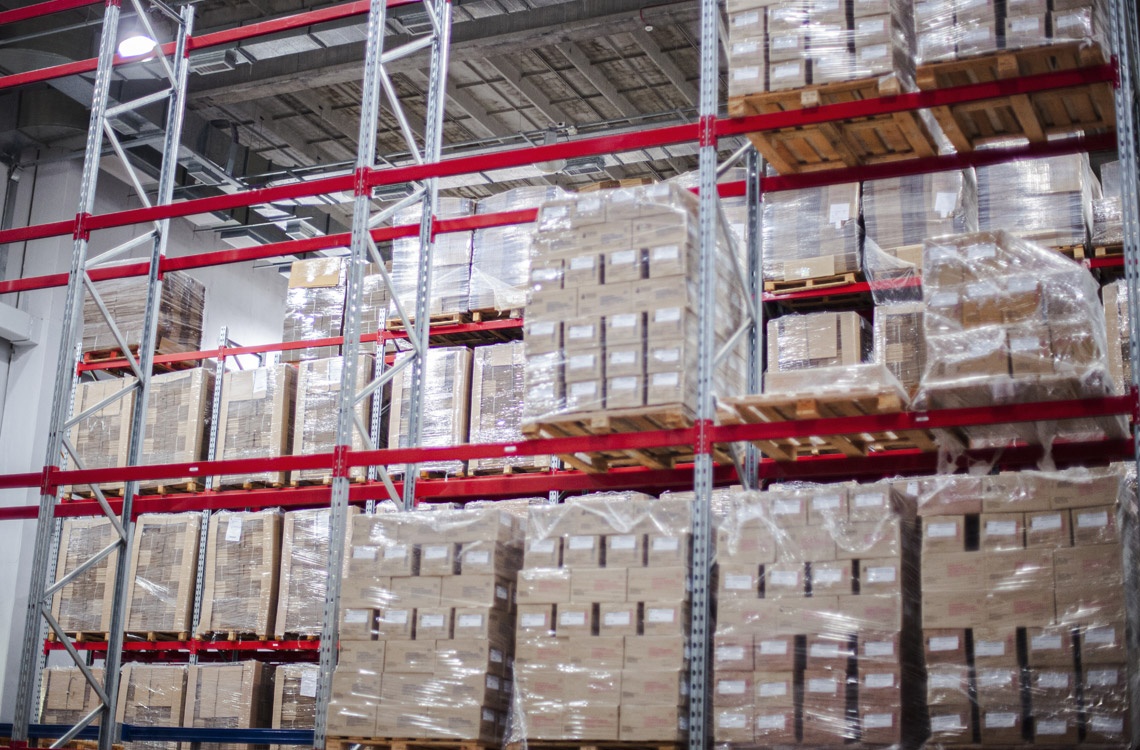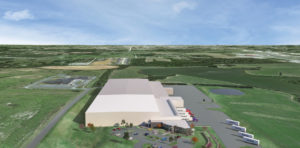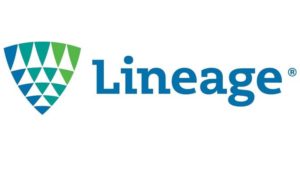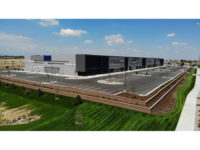If you’re a current cold storage user and you have concluded that new construction is not the optimal solution for an expansion or relocation strategy, this installment of Farm to Frozen will provide an overview of navigating the current leasing environment. This guide can be helpful if you have determined that your occupancy simply cannot wait for new development and also can be helpful if your occupancy requires a shorter term length that is not right for a new-build solution.
Let's begin, as most of the previous articles have, by completing a thorough assessment of what your food and beverage business needs from cold storage. Consider factors such as location, size, required temperatures, access to labor, and proximity to suppliers and customers. Also, think about future growth: will the property be able to accommodate your business as it expands? Will you need intermodal access? Considering the scarcity of available cold storage space, it may make sense to rank and prioritize these characteristics so that you know ahead of time where compromises might be allowable and where they may not be.
Finally, it is important to understand your budget and it can be helpful to translate your budget into numerous metrics to aid in the upcoming search. Do you need a certain occupancy cost per pallet position? Per square foot? Per cubic foot? Knowing these ahead of time will allow for easier leveling between various options.
Market Research
Once you have a clear understanding of your needs, it is time to dive into market research. It is advisable to use a tenant representation broker familiar with industrial real estate in your geographical area. Familiarity with cold storage would be ideal, although such specialization may not be available in every market. Tenant representation brokers, or “tenant rep brokers” as they are commonly called, are often paid only a success fee by the landlord. They are a great resource for occupiers who do not have their own in-house real estate departments. Food manufacturers and processors looking for more cold storage space can use the broker to familiarize them with the current market conditions, including an inventory of available locations, offered lease rates, market incentives and current market lease terms, including factors like annual rent increases, tenant improvement allowances and required security deposits.
Finally, it behooves you to be aware of the new construction pipeline in your market. For example, it would be a shame to lease a third-generation building with inferior refrigeration and clear heights without knowing that new construction is coming online—offering all the modern efficiencies of a new building, potentially at a similar lease rate to the older sites.

Evaluating Properties
As you begin receiving options from your broker, you'll start the evaluation process. If you are conducting your search independently by using tools such as loopnet.com, don’t forget to also reach out directly to cold storage owners, as they might have upcoming availabilities that are not yet being marketed. Hopefully, you will have more than one option to compare against. If not, I would recommend extending the geographic boundary of your search until you find the next closest option. Even if there is no intention of occupying a facility outside of your current geographic boundary, having comparables will prove to be a valuable exercise.
When evaluating potential properties, look beyond the basics. Consider factors such as the condition of the building itself, the roof, type of, and the remaining useful life of, the refrigeration system, as well as dock and truck court conditions. The layout and functionality of the space (temperature ranges, existing racking, drains, inspection rooms, etc.) also are important in evaluating a user’s specific needs. Consider hiring refrigeration experts, racking consultants, contractors, inspectors and other professionals to assist in your due diligence and evaluation of the space.
If you are lucky enough to have more than one option to consider, another often overlooked item to evaluate is the reputation of the landlord. Consider factors like their have experience level owning cold storage? Do their other buildings seem to be maintained well? Do they have many vacancies? Or is that landlord’s portfolio mostly occupied?

Would you like to be alerted when new Farm to Frozen articles are posted?
Sign up to receive our eNewsletter, What's HOT in COLD! This weekly eNewsletter showcases the latest trends, news technologies and products impacting the refrigerated, chilled and frozen segment. It also includes a notice when new Farm to Frozen content drops! Sign up now to get on the list!
Negotiating the Lease
Once you have found a property that meets your needs, you will begin to negotiate lease terms with the landlord. This is where your broker can really shine. A prolific broker will be able to use the most current market terms, conditions and rental rates to guide you through your negotiation. It cannot be stressed enough that in this exercise, you want the as much data as possible. Do not go into the lease negotiations blindly. Even in a competitive market, pragmatism and preparedness go a long way.
There are intricacies specific to cold storage buildings, like costs and temperatures required to protect both the tenant’s frozen/perishable inventory and the landlord’s building/investment. It is advisable to define each parties’ responsibilities relative to the delivery and the maintenance of the building’s cold storage and food-related improvements throughout the lease term.
"A lessee-lessor relationship is a partnership and many problems can be mitigated or outright avoided by discussing, understanding and establishing each party’s responsibility upfront during the lease negotiation before any issues may arise,” said Kevin Griffiths, senior vice president of leasing at Jones Lang Lasalle.
Here is a quick primer on commercial lease economics:
Depending on your market, building type and the landlord’s sophistication, a lease may be structured in a myriad ways. The two most common are gross and triple net (NNN). Gross leases come with a bigger sticker price, as the tenant is responsible for only paying one instance of rent per month. That rent price includes taxes, insurance, common area maintenance (the “nets”) and other possible “additional rents.” In a NNN lease, the tenant is responsible for paying the base rent to the landlord, and then paying the additional rent, or nets, directly as a pass-through from the landlord. In a way, a gross lease puts all of the property expense risks on the building owner. For example, if the insurance costs increase drastically (looking at you, Florida), it impacts the landlord’s margin and not the tenant. On the other hand, with a NNN lease, the base rent is lower, but all of the property expense risk is on the tenant. There are certainly pros and cons to both. Additionally, there are limitless combinations in between. So-called “modified gross leases” can split different expense risks between the landlord and tenant. In all likelihood, the landlord will dictate what type of lease they are willing to sign, but there might be some room for negotiation if a modified gross lease is on the table. In evaluating two separate availabilities with differing lease structures, tenants must be aware of the full occupancy costs and the risk differences.
Depending on the complexity of the letter of intent or proposal from the landlord, it may be wise to bring in one more key player at this step: your attorney. Again, as with anything, experience matters. An injury attorney is not the right choice for handling your real estate transaction. Seek out a qualified and experienced commercial real estate attorney, ideally with industrial leasing experience. Together with your broker, your attorney will help you get to a meeting of the minds on business terms with the landlord. From there, you will move onto negotiation of the actual lease document. This step, of course, must include an attorney. Upon executing the lease, depending on what work has been negotiated to be completed by the landlord prior to occupancy, you will soon be ready to occupy the space. Ensure you track all documents, property improvement work, prior and existing conditions, as well as your communication with the landlord and their property manager. Be especially diligent recording and documenting these agreements, as you never know when you might need to present them in the future.
Conclusion
Leasing an existing facility has typically been a more flexible and cost-effective option for businesses versus buying or developing new cold storage. Leasing allows the food business to save much-needed capital and deploy it in a growth manner rather than on real estate. This is particularly beneficial for businesses with changing needs or those looking to quickly expand.
That said, leasing does have its drawbacks. Two big drawbacks include not having control over the ownership of the property and not participating in the value creation. You might have an accommodating and thoughtful landlord, but there is no mechanism to prevent them from selling the building to a less-attentive owner. Also, the equity in the building’s valuation, based on the income stream, longevity and credit of the tenant will only benefit the current landlord in the event of a sale. It is rare, but not impossible, for a tenant to negotiate some sort of profit-sharing on a sale.
Finding and leasing a cold storage facility requires careful planning, thorough research and strategic negotiation. Remember, the theme that keeps coming up in the Farm to Frozen series is having the right partners. For this solution—leasing your own space— it is advisable to use a tenant representation broker as they can be the lynchpin for success. Evaluating the existing cold storage market can be daunting, as the average building is over four decades old. However, with the right approach and right team, you can find the right property for your business. Happy hunting!








